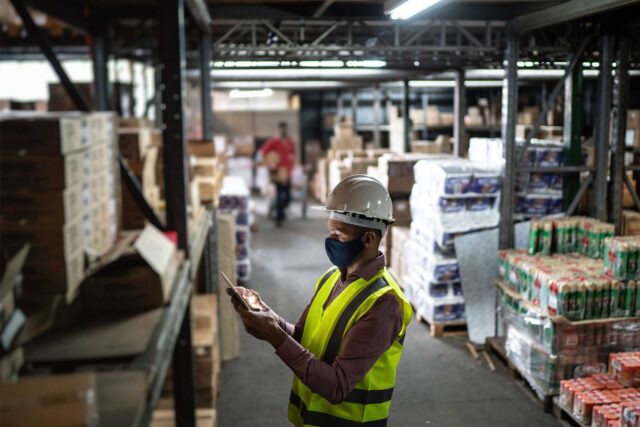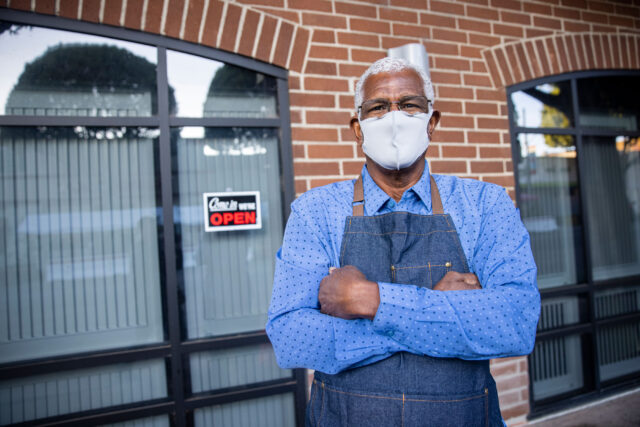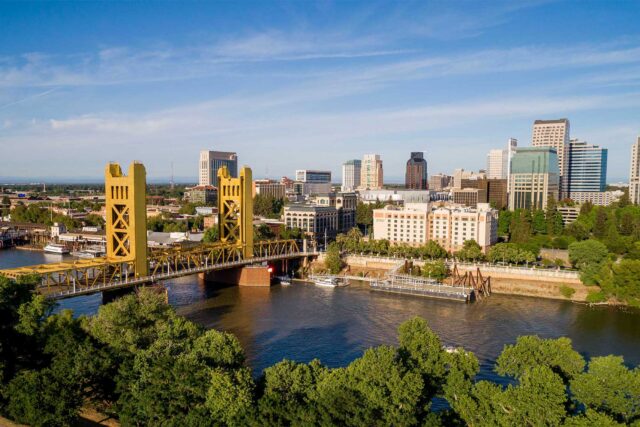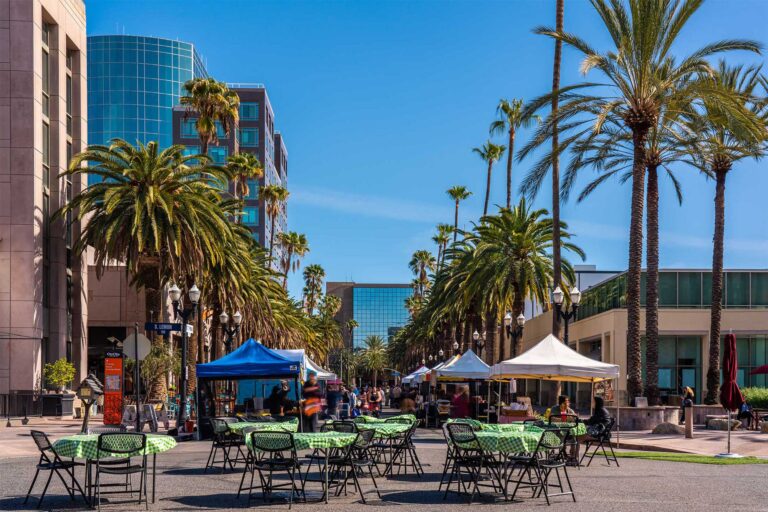This post is part of a series analyzing how job sectors will affect economic recovery in five California regions.
The major metro areas of Southern California, except Los Angeles, weathered the pandemic labor market much like the state overall. The state’s workforce remains depressed despite some recovery over recent months—and Anaheim-Irvine, San Diego, and Riverside-San Bernardino make up a quarter of that workforce. But while the labor market weakened when leisure and hospitality businesses closed, the effect was mitigated by growth in transportation and warehousing, especially in the Inland Empire.
As of March 2021, unemployment in Southern California metro areas mirrored the state, as it has throughout the pandemic. Between 14%–16% of residents in Orange, San Diego, Riverside, and San Bernardino Counties were unemployed in April 2020; rates are now down by about half, or between 6.4%–7.8%. Unemployment in LA was higher throughout the pandemic, and remains higher at 10.9%. Imperial County has the highest unemployment rate statewide at 15.7%.
Employment plummeted between 15%–18% across Anaheim-Irvine, San Diego, and Riverside-San Bernardino metros in April 2020, similar to statewide (16.9%). But despite some stagnation during last winter’s COVID-19 surge, regional recovery has been relatively consistent—and even slightly better in the Inland Empire, where employment fell less and the region recovered about 70% of jobs lost as of March 2021. Anaheim-Irvine and San Diego metros have recovered 50%–60% of jobs so far.
Accommodation, food, arts, entertainment, and other services accounted for 63% of job loss in the region, with San Diego and Anaheim-Irvine suffering most when restaurants closed and tourism dropped off. Home to Disneyland and other theme parks, Anaheim-Irvine has the largest share of jobs in arts and entertainment of any major metro in the state, and employment remains down 55% compared to one year ago.
By contrast, the Inland Empire was less affected by leisure and hospitality losses; instead, growth in transportation and warehousing buoyed the region. Jobs in this sector are up 21% as of March—an even stronger pattern than Central Valley, and a rate over three times higher than statewide. As a critical juncture out of LA and Long Beach ports and a distribution hub for Amazon, UPS, and FedEx, the Inland Empire benefited from heavier demand for delivery services. With about 33,000 more jobs today than one year ago, transportation and warehousing in Riverside-San Bernardino balances the shortfall from jobs lost in accommodation and food services.
The pace at which tourism rebounds around San Diego and Anaheim-Irvine—especially domestic tourism given that COVID may constrain international visits—will factor into employment opportunity. But full recovery demands a return of international visitors and may be shaped by how well restaurants and small businesses weathered the past year. Similarly, workers in leisure and hospitality may face fewer or different opportunities.
Further inland, many residents continue to benefit from growing job opportunities in logistics. However, well-paid jobs are still limited in the Inland Empire, and economic forces like automation may alter the industrial workspace. Steps to strengthen career pathways in logistics are essential. Overall, policymakers must tailor their approach to recovery in Southern California, balancing the needs of dominant industries with an eye toward improving opportunity for workers over the coming years and decades.
Our next post explores the labor market challenges faced in the Bay Area.
Topics
coronavirus COVID-19 Economy employment jobs recession recovery regional employment recovery unemploymentLearn More

A Regional Look at the Availability of Well-Paying Jobs after COVID

Bay Area Recovery May Lag without Onsite Tech Workers

California’s Evolving Economy

Farms, Freight, and Retail Support the Recovery in Central California

How Did California’s Economy Recover from COVID—and What Comes Next?

Making Sense of California’s Economy

The Sacramento Area Economy Runs on Government




